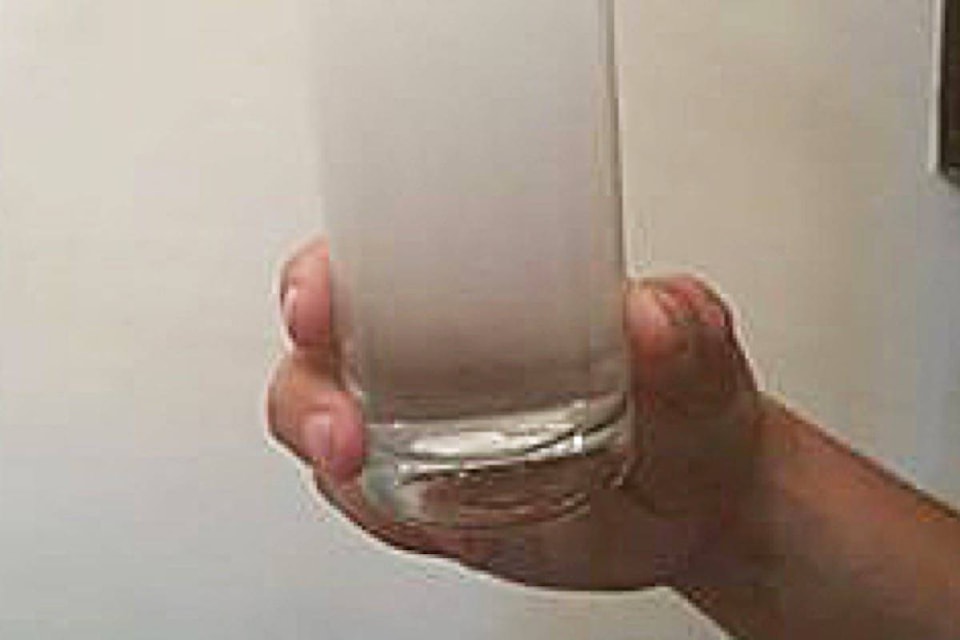The Village of Burns Lake says the discolouration of tap water caused by manganese in Burns Lake is one of the most frequent complaints they receive from the public.
But apart from the water discolouration sometimes seen in Burns Lake, some residents are also complaining about their tap water often looking ‘milky’ or ‘cloudy.’ Burns Lake resident Jenna Durban, who lives in an apartment building on Eighth Avenue, described her tap water as “outrageously disgusting.”
“I mean, it looks like milk,” she said. “I won’t even feed my plants that water.”
She recently posted a photo on social media of a cloudy-looking glass of water saying, “If you think that’s bad, you should see the hot water.”
“It’s pretty gross and sad that we can’t drink our own water,” she added.
But although tap water in Burns Lake can sometimes look ‘milky,’ the village says residents should not be concerned.
Burns Lake director of public works Dale Ross said the ‘milky’ water is caused by air bubbles, which will quickly dissipate if left to stand. He said the air bubbles can occur when there is a disruption to the lines such as flushing, line breaks or maintenance.
“There is no risk to the public due to air bubbles in the water,” said Ross. “The Village of Burns Lake regularly tests the water according to Northern Health guidelines.”
When it comes to the water discolouration caused by manganese, the village also says that manganese has no known adverse health effects. Nevertheless, the village is currently moving forward with a water treatment project, which would filter the manganese in the village’s water systems.
“Currently, with manganese, there’s only an aesthetic problem, but we heard in informal talks with Northern Health that the standard for manganese may be up for review and could change in coming years,” said Ross last year.
While the village’s original plan was to only invest in a pilot study this year, a surplus generated by the water tower project has allowed the village to speed up its water treatment project by investing in a water treatment system design in 2017.
“Completing the design phase now will ensure we are completely shovel ready when we apply to the next available grant,” said Ross.
The final phase of the project, which would involve the installation of the treatment system, could cost the village between $2 and $4 million.
